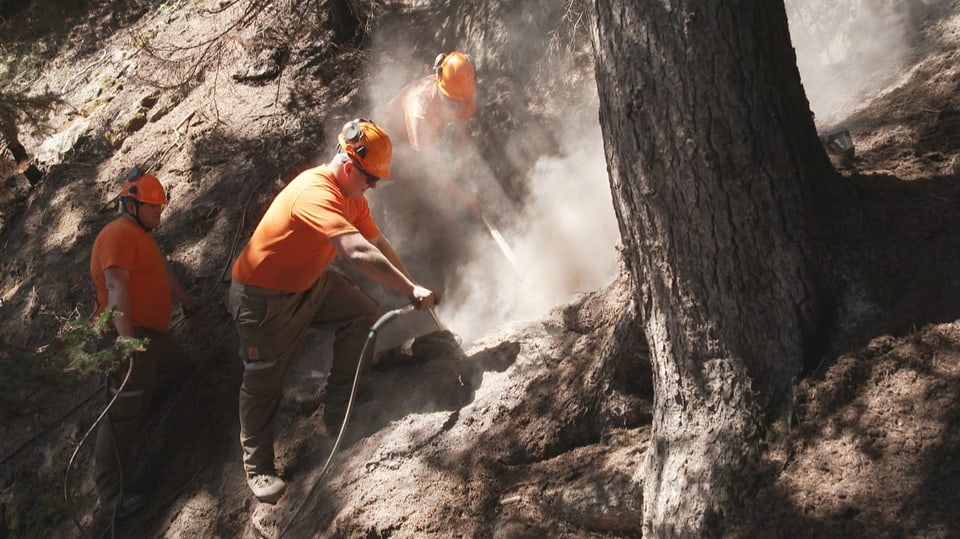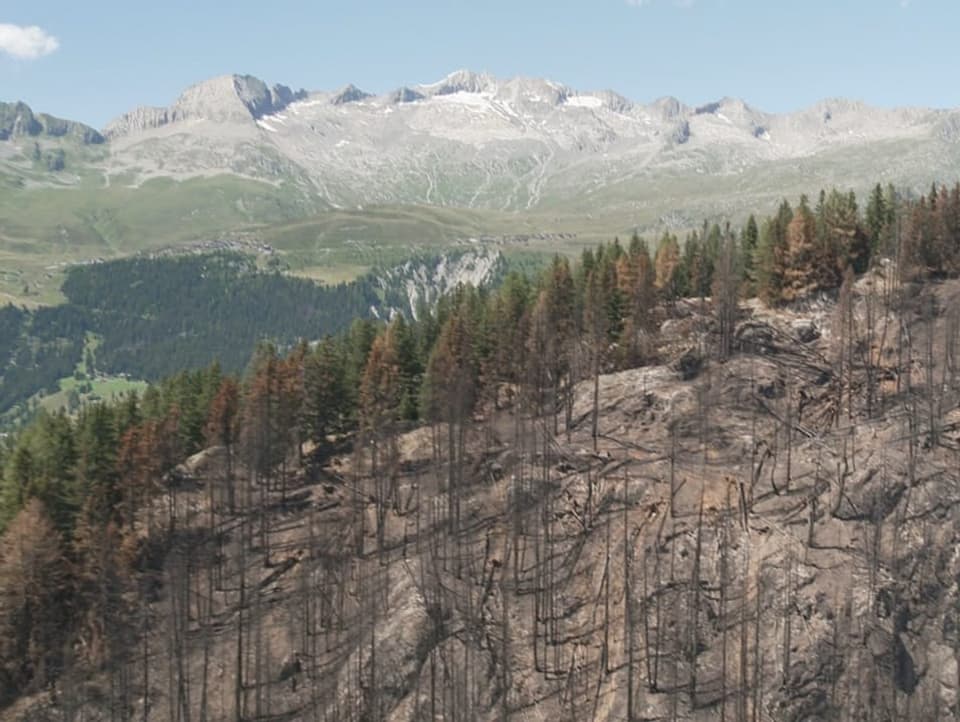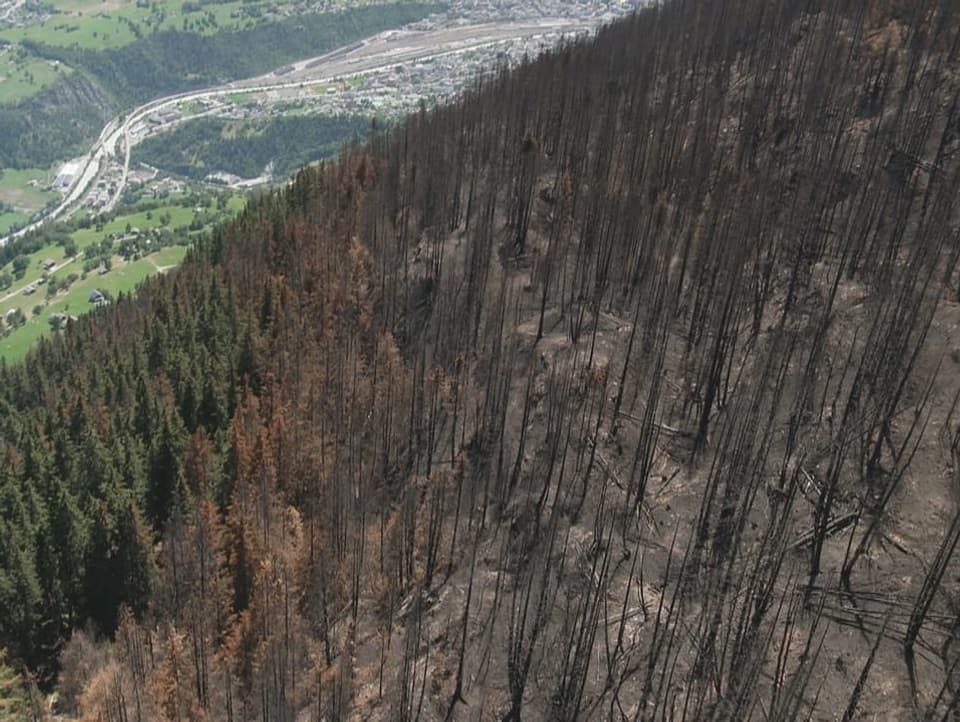Contents
Three weeks after the outbreak of the forest fire above Bitsch, the situation has stabilized. The authorities have initiated the transition from the special to the normal situation. However, the emergency services remain on alert. Hidden embers are still a risk.
- The situation has stabilized three weeks after the forest fire broke out in the municipalities of Bitsch and Riederalp. The authorities have initiated the transition from the special to the normal situation.
- Gradually, the emergency services finish the extinguishing work in the fire area. The fire brigade remains on alert.
- New fires cannot be ruled out. Hidden nests of embers in the ground can still ignite new fires months later.
The emergency services have still found hidden nests of embers in the past few days. In the current week alone there were 25. The week before that, more than twice as many.
Detect embers: Thanks to a thermal imaging camera and nose
The emergency services identified the embers found so far using a thermal imaging camera: the army was stationed in vehicles on the mountain on the opposite side of the valley for more than two weeks and scanned the entire forest area using thermal imaging cameras – a Sisyphean task. They searched the entire forest, inch by inch, night after night. In addition, a Super Puma helicopter equipped with a thermal imaging camera searched for other sources of fire from the air.
Legend:
Army uses thermal imaging cameras to look for embers
An up-to-date map was created from the coordinates found, which the firefighters could then use to locate the source of the fire in the forest.
SRF
As the report by 10vor10 on site in the forest fire area shows, in addition to the technical aids, the nose – i.e. the sense of smell – was also an important aid. Again and again it happens that the emergency services smell smoke and burnt wood – then they “follow their noses” until the source of the fire is found and can be extinguished using flown-in water pumps.
Hot spots can still spark new fires months later
Hidden embers are still a risk. Experiences from other forest fires show that hidden sources of fire in the ground can trigger new fires even months later, explains district forester Peter Aschilier. The sources of the fire are sometimes up to 40 centimeters deep in the ground.

Legend:
Sweaty work: extinguishing embers
The water is pressed at 200 bar and by means of a high-pressure pump and extinguishing lance into the ground onto the embers.
SRF
Even multiple precipitations are often not effective enough to extinguish the embers. Therefore, high-pressure pumps and a water tank are flown in to extinguish the fire. Using a mounted extinguishing lance, the water then shoots deep into the ground at 200 bar.
Destruction three weeks after the fire broke out is enormous
On 100 hectares of the affected forest – an area the size of 140 football fields – 50,000 trees were completely burned. The risk of erosion has also increased. Therefore, a new hazard map is now being drawn up.
50,000 trees burned
District forester Aschilier explains that measures for afforestation of the forest are now being examined. It will take up to 100 years for the forest to fully recover.
Emergency services will finish some of their work from Monday – the state of alert will remain
The situation has now stabilized to such an extent that the authorities initiated the transition from the special to a normal situation shortly before the weekend. The army ends its deployment on the ground on Monday.
As of Monday, the fire brigade will continue to keep a first-aid unit of around ten on alert. A helicopter can also be requested at short notice if required. Civil protection members are expected to be on duty with around 25 men until the middle of next week.


